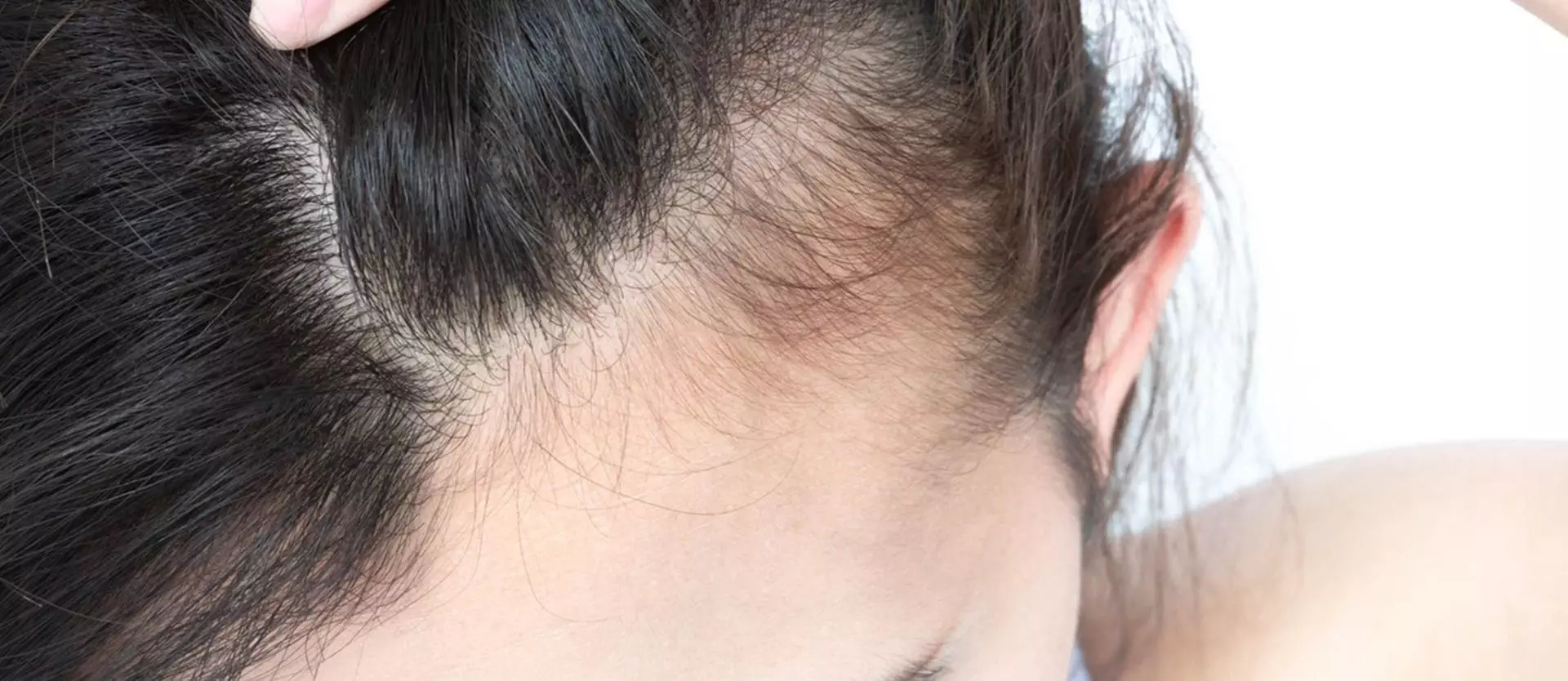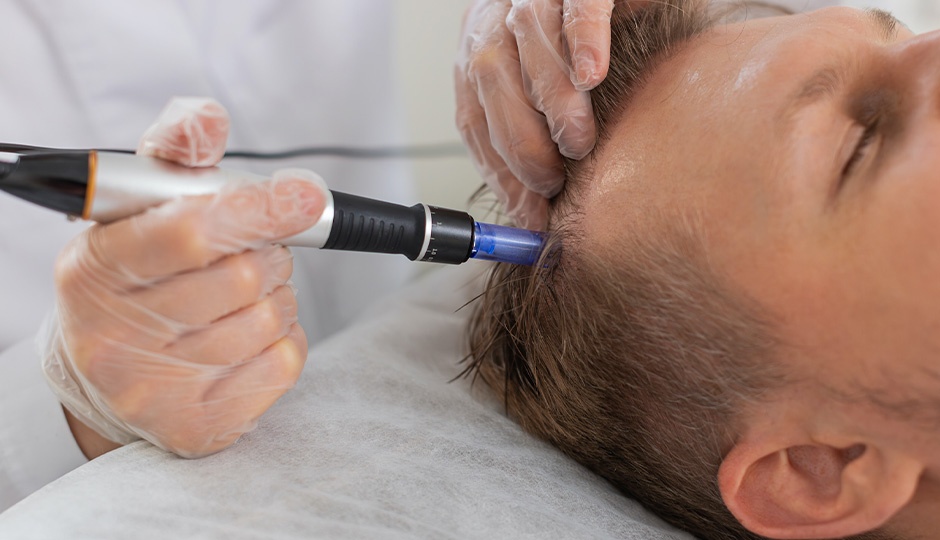For many women experiencing hair loss, it begins with a gradual thinning of the part in the hair, often right down the center. This is type of pattern of thinning hair is often called female pattern hair loss. Some women have a receding hairline. This is a bit different and follows more along the lines of how men lose their hair.
However, for some women the receding hair line appears to look like a noticeable band across the forehead and temples. This condition is called frontal fibrosing alopecia. It’s a condition that is becoming more commonly seen in women than it used to be. For women experiencing it, it can be frightening and worrisome.
Why Does It Happen?
Fibrosing alopecia is a type of lichen planopilaris. This condition causes scarring along the hairline. When scarring occurs, the hair follicles present in that area cannot produce hair. As a result, this condition often causes hair loss that does not grow back.
Sometimes women first experience hair loss in their eyebrows. It may not be a total loss of the eyebrows, but it may be significant. Many women notice this first before they notice the changes to their hairline.
Men can also experience frontal fibrosing alopecia. When it happens, many men first notice a thinning of the hair from their beards. Then, they may notice the receding hairline occurring.
No Cure But There is Help
There is typically no way to fix this problem should it occur. Because the skin develops scars along the area, it’s impossible for hair to fully grow through this area normally. The hair follicles themselves are damaged and no longer able to produce hair.
Frontal fibrosing alopecia is considered progressive. That means it worsens over time. However, it may be slowed down in many people. When you first notice this condition, take action right away. When you do, it may be possible to reduce some of the early inflammatory damage that’s occurring. That may help to provide a slowing of the development of the condition. It may even stop it from worsening significantly.
If you notice these types of symptoms, seek out assistance from a dermatologist. This may allow for you to get treatment to reduce the inflammation created in this area and, in some cases, minimize the risk of it progressing.
Know the Signs and Symptoms of Fibrosing Alopecia
Frontal fibrosing alopecia displays differently from one person to the next. That’s why it’s important to know all of the symptoms of this condition so you can get help as soon as possible. Some key things to look for include the following:
Look for hair loss in various areas:
- Hair loss on the beard or eyebrows
- Hair loss on the arms
- Leg hair loss
- Receding hairline
Changes in the way your hairline looks may be important indications that it’s time to get help. Don’t put off getting in to see your doctor.
What Can Be Done to Treat This Condition?
Every situation is a bit different. If the hair loss is significant already, it may be hard to see any significant improvement in it. Remember, this condition can cause permanent hair loss. However, with early treatment, you may be able to reach an area of stabilization, which means it does not continue to worsen.
Many dermatologists start with taking a scalp biopsy to confirm the diagnosis of frontal fibrosing alopecia. Treatment may involve the use of medications that are designed to reduce inflammation. This may include the use of finasteride or dutasteride, both of which may help to prevent further hair loss. Additionally, your dermatologist may recommend a series of corticosteroid injections to reduce the inflammation.
Working with a dermatologist is the best way to treatment for this condition because they can adjust medications based on what is working and what is not. They can also balance medications you are already taking to ensure there are no interactions.
If you have this condition, seek out help for it as soon as possible to reach a level of stabilization or slow down the progression of permanent hair loss. Keep in mind that for permanent hair loss, there are options to help you fill in the areas of hair loss with non-surgical hair replacement. To learn more about options available for frontal fibrosing alopecia, contact the team at Unique Hair Concepts for a complimentary, private consultation.






